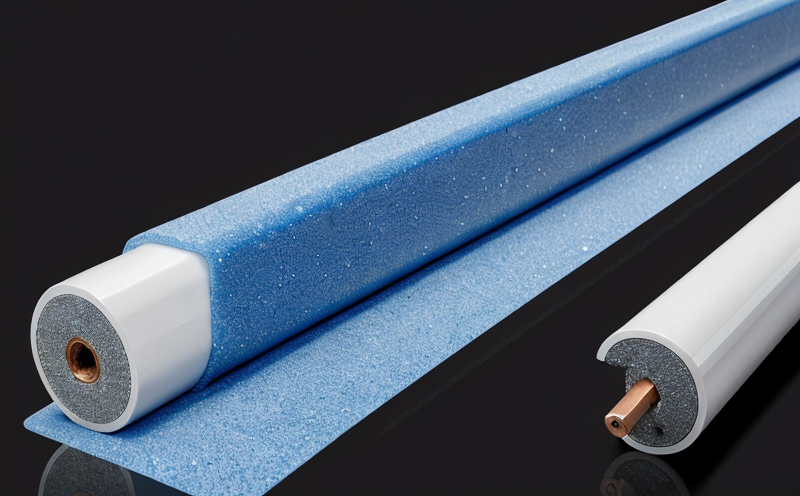Impact of surface preparation on adhesion strength
The Crucial Role of Surface Preparation in Ensuring Strong Adhesion Unlock the Full Potential of Your Materials with Eurolabs Expertise
In the world of materials science and engineering, adhesion is a critical factor that can make or break the success of a product or process. Whether youre developing a new coating system, designing a cutting-edge composite material, or simply trying to ensure that your products stick together as intended, adhesion strength is an essential consideration. At its core, adhesion is the phenomenon by which two surfaces come into contact and bond together, transferring loads between them. However, achieving strong adhesion is often easier said than done, as it relies on a complex interplay of surface properties, chemistry, and physical interactions.
In this article, well delve into the critical impact of surface preparation on adhesion strength, highlighting its far-reaching implications for businesses across various industries. Well also explore the advantages of leveraging Eurolabs laboratory services to unlock the full potential of your materials and ensure strong, reliable adhesion.
The Importance of Surface Preparation in Adhesion
Surface preparation is a critical step in ensuring strong adhesion between two surfaces. When surfaces are not properly prepared, they may not bond effectively, leading to reduced strength, increased risk of failure, and compromised performance. On the other hand, thorough surface preparation can significantly enhance adhesion by creating a smooth, clean interface that allows for optimal interaction between the two materials.
Advantages of Using Surface Preparation on Adhesion Strength
The benefits of using surface preparation to enhance adhesion are numerous and varied
Improved bonding strength By removing contaminants, smoothing out rough surfaces, and creating a stable interface, surface preparation can significantly increase the bonding strength between two materials.
Increased durability Stronger bonds resulting from effective surface preparation can lead to improved product lifespan, reduced maintenance costs, and increased overall reliability.
Enhanced material performance By optimizing adhesion, businesses can unlock the full potential of their materials, leading to better mechanical properties, thermal stability, and resistance to corrosion or degradation.
Reduced manufacturing defects Surface preparation helps eliminate imperfections that can lead to defects during production, minimizing waste and ensuring higher product quality.
Some key benefits of surface preparation on adhesion strength include
Improved surface roughness By smoothing out surfaces, businesses can create a more even interface for bonding, reducing the risk of uneven stress distribution and subsequent failure.
Enhanced chemical reactivity Effective surface preparation can increase the reactivity of surfaces, allowing them to interact more effectively with adjacent materials and promoting stronger bonds.
Reduced contamination Removing contaminants from surfaces helps prevent unwanted substances from interfering with adhesion, ensuring that bonds form as intended.
Understanding the Science Behind Surface Preparation
While the benefits of surface preparation are clear, its essential to understand the underlying science driving these advantages. When two surfaces come into contact, they interact through various mechanisms, including
Mechanical interlocking Asperities (small projections) on one surface fit into crevices on another, creating a mechanical bond.
Chemical bonding Molecules from adjacent surfaces react to form covalent or ionic bonds.
Van der Waals forces Weak electrostatic interactions between molecules contribute to adhesion.
Effective surface preparation can enhance these mechanisms by
Removing contaminants and debris Clearing the interface of unwanted substances that might interfere with bonding.
Smoothing out surfaces Reducing asperities and crevices, allowing for more efficient mechanical interlocking.
Increasing chemical reactivity Enhancing the ability of molecules to interact and form bonds.
Frequently Asked Questions
Q What is surface preparation?
A Surface preparation involves cleaning, smoothing, or treating a surface to create a stable interface between two materials. This process can include methods such as sanding, polishing, and applying coatings.
Q Why is surface preparation important for adhesion strength?
A Effective surface preparation creates an optimal environment for bonding by removing contaminants, reducing surface roughness, and increasing chemical reactivity.
Q What are the advantages of using surface preparation on adhesion strength?
A Surface preparation can improve bonding strength, increase durability, enhance material performance, and reduce manufacturing defects.
Q How does Eurolabs laboratory services contribute to ensuring strong adhesion?
A Eurolabs experts utilize cutting-edge equipment and techniques to provide comprehensive surface preparation analysis and optimization services, helping businesses unlock the full potential of their materials.
Conclusion
In conclusion, surface preparation is a critical step in achieving strong adhesion between two surfaces. By leveraging Eurolabs laboratory expertise, businesses can ensure that their products stick together as intended, leading to improved performance, durability, and overall reliability. Whether youre working with coatings, composites, or other materials, understanding the importance of surface preparation and harnessing its benefits can make all the difference in driving success in your industry.




